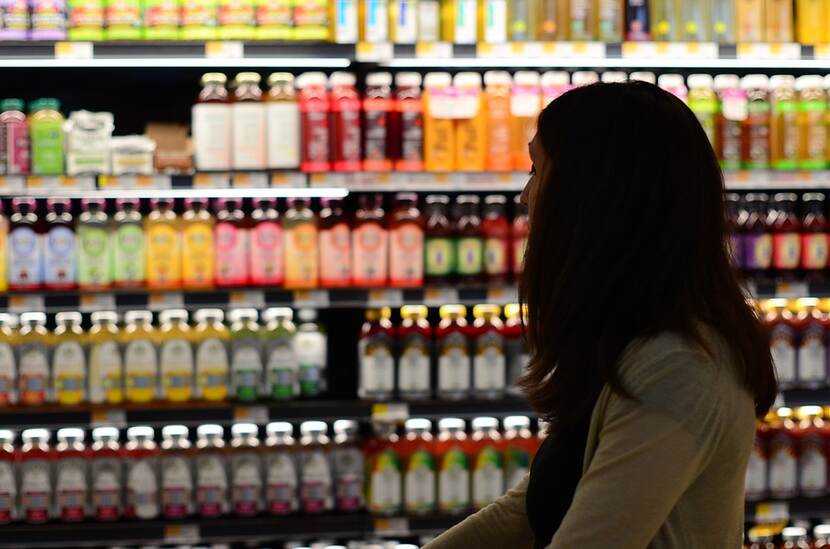Hungary: Food in the focus
Projections for prices after the end of the price caps, the mechanics behind skyrocketing food inflation and the continuing problem of food waste - Our briefing on the last week in Hungary's agro and food industries

What to expect after the end of the price caps on food
Agrárszektor.hu interviewed György Raskó, a renowned agricultural economist on the possible outcomes should the price caps end after their latest extended deadline, December 31, 2022. The capping of the prices of basic food items was supposed to be a temporary measure intended to stay in effect for three months – However, the policy has now been in place for close to nine months.
Mr. Raskó has commented that although the price caps regulate the prices of eight basic staple food products, the measure has not had a deflationary effect but paradoxically, accelerated inflation. This was due to the fact that commercial companies increased the prices of other groceries and household items to make up for losses suffered from the price caps.
Mr. Raskó also highlighted the fact that in other EU member states where there are no price caps in effect, food inflation is currently equivalent to one third to one half of the Hungarian value. The economist also told the news portal that he expects the government to further extend the price cap policy before the end of the deadline because “it is politically profitable for them and the financial burden of their policy does not fall on the government but on consumers.” Mr. Raskó also added that a decrease of food prices cannot be expected and that for example the prices of vegetable oils will continue to rise by another 50% to 60%, to the price levels in Western Europe, while bakery products are already at the same price level as in Austria and Slovakia.
The economist believes that after the eventual end of the price cap policy, the price of granulated sugar will not increase considerably due to the fact that global sugar prices have plummeted, however, the other price regulated products will become 30% to 40% more expensive. These prices will also be affected by global political and economic trends: If Russia cannot sell their wheat on the international market after a record harvest, the country will “sit on 50 million tons of unsold wheat.” Meanwhile, maize prices aren’t expected to increase much since the harvest in the United States produced 353 million tons of corn.
At the very least, according to Mr. Raskó, food shortages cannot be expected in Hungary.
Hungary: The greatest y-o-y increase in the price of food in the EU
The overlapping crises in the global economy and climate change, as well as Russia’s invasion of Ukraine have deeply impacted European agricultural and food industries. The increase in food prices is a global phenomenon, and all EU countries saw, at varying levels but at a steady rate, an increase in the prices of food.
This figure, however, has been the highest in Hungary between 2021 and 2022. While the EU average was 14.3%, and the Dutch figure was 13.1%, food inflation in Hungary has reached a staggering 34% y-o-y value by August, 2022, which is 2.3 times the European average.
These figures are based on the latest data by Eurostat. Official figures can vary however. Hungary’s average inflation value, according to the governmental Central Statistical Office, was 15.6%, while Eurostat’s methodology measured Hungary’s yearly inflation in August at 18.6%.
This was reported by Pénzcentrum.hu, a financial news portal. The portal also interviewed Mr. György Raskó about the country’s high food inflation value. Mr. Raskó has commented that in the spring, inflation was favorable for the government’s policy vision since in early 2022, the government spent lots of money on welfare expenditures including thirteenth month pension payments and income tax returns. Mr. Raskó explained that in his opinion, these increased consumption and through inflation, the government could cover the €2.43 million extra deficit of the treasury caused by the welfare expenditures. Moreover, according to the economist, grocery retailers further increased prices to cover their extra tax burdens, which led to a vicious spiral in which “every actor felt justified in raising prices,” leading to a situation where now “every agricultural commodity and raw material has a higher producer price than their respective price levels at the domestic commodity market, or the commodity markets in Paris or the United States.”
According to Mr. Raskó, sooner or later international trends will help bring food prices down, for example cheaper eggs, wheat and corn from Ukraine will temper domestic prices. The higher prices however, are aligned with the interests of producers, who suffered catastrophic losses due to the drought this summer.
Food waste rate in Hungary remains high
The organization Hungarian Food Bank has published their newest figures on Hungarians’ food waste habits. The organization, together with the National Food Chain Safety Office (NÉBIH) and the company Electrolux Hungary have conducted a nation-wide representative survey.
According to the organization, people in Hungary generate 65 kg of food waste per capita per year, even though consumers report that they try to be mindful of wasting groceries. For comparison, the per capita food waste in the Netherlands is 34 kg according to Wageningen University.
Eight out of ten Hungarians see food waste as a global problem. Nonetheless, Hungarians waste food worth €110 per capita every year. Only 45% know what temperature to set their refrigerators to (0-4°C).
The survey also showed that 82% of the responders would like to receive more information on food waste and would like to see more information on the environmental impact of food items on the packaging. The majority of responders also thought that food waste can primarily be reduced by educating children on sustainable practices in school and by providing adults with more information on reducing food waste.